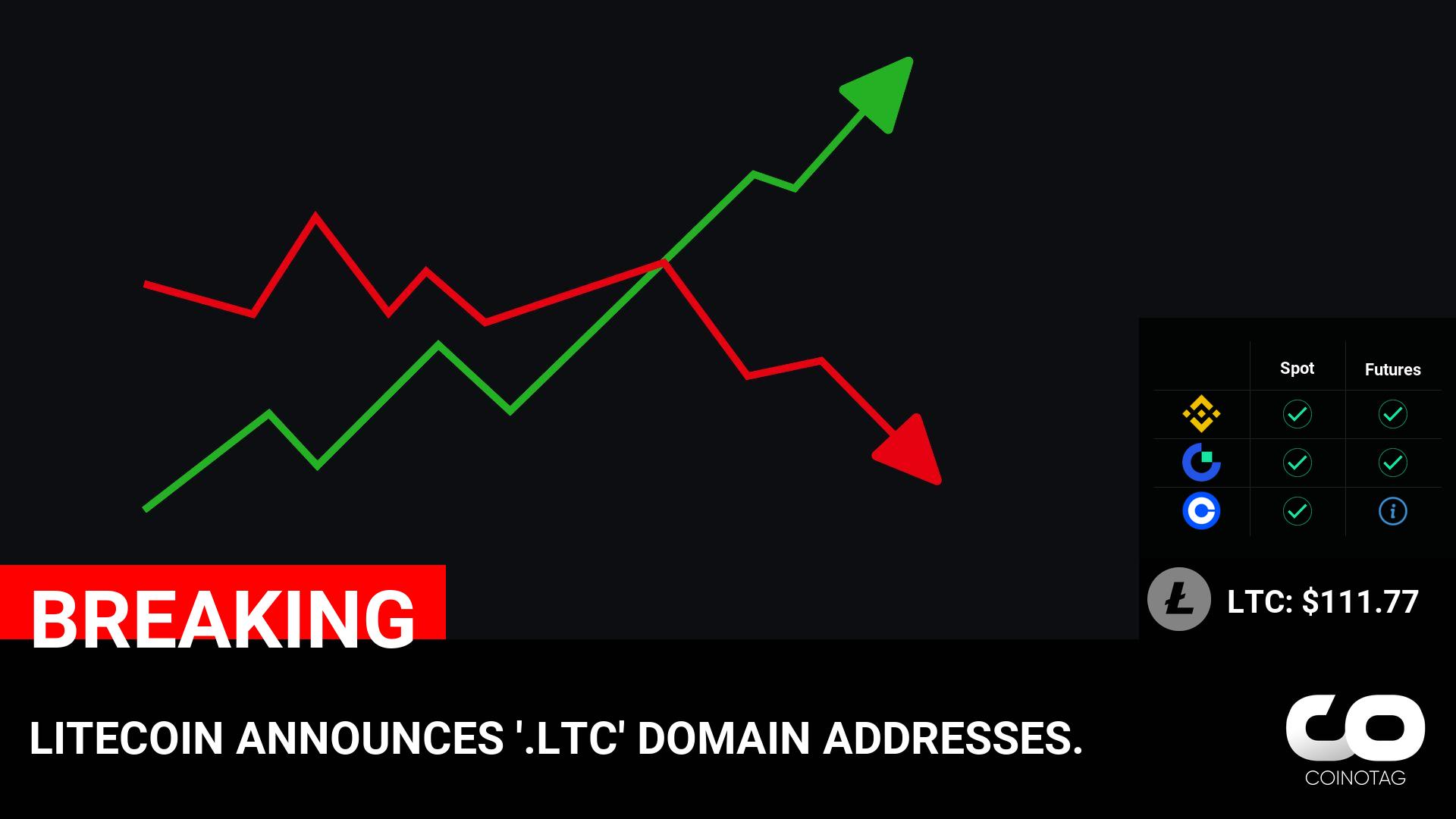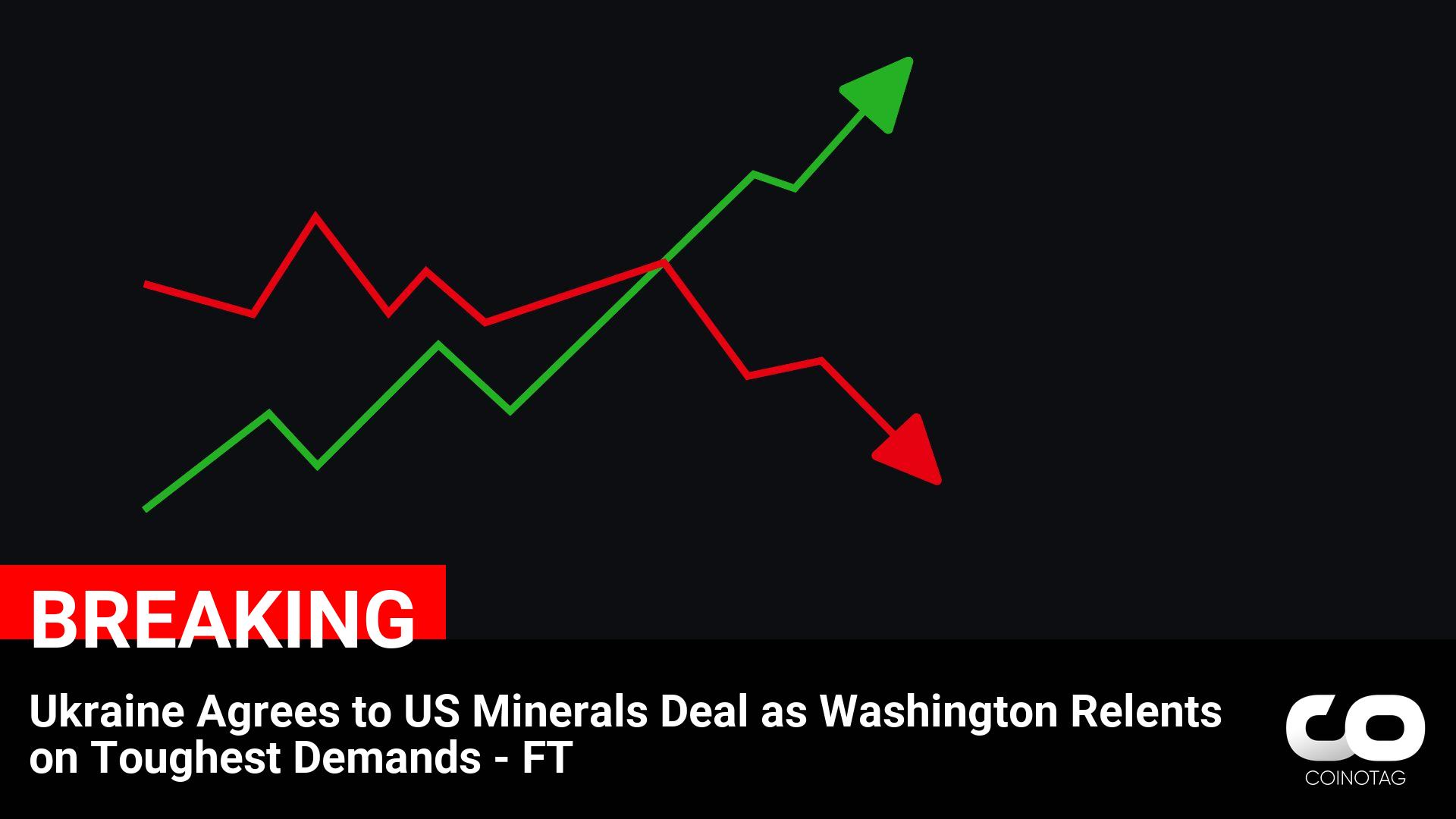
LITECOIN ANNOUNCES ‘.LTC’ DOMAIN ADDRESSES. ????Coin: Litecoin ( $LTC ) $111.77
CoinOtag
You can visit the page to read the article.
Source: CoinOtag
Disclaimer: The opinion expressed here is not investment advice – it is provided for informational purposes only. It does not necessarily reflect the opinion of BitMaden. Every investment and all trading involves risk, so you should always perform your own research prior to making decisions. We do not recommend investing money you cannot afford to lose.
Urgent Warning: ECB Advisor Brands Bitcoin Reserves a ‘Risky Speculative Asset’

Just when Bitcoin seemed to be gaining mainstream traction, a stark reality check has emerged from the heart of European finance. Jürgen Schaaf, an influential advisor at the European Central Bank (ECB), has delivered a scathing critique of Bitcoin, dismissing the notion of Bitcoin reserves as a viable strategy for central banks. His comments, reported by Cointelegraph, paint a picture of Bitcoin as a dangerously volatile and fundamentally flawed asset, especially in the context of current market turbulence where Bitcoin has dipped below $88,000, triggering massive crypto liquidations worth $1.5 billion in just 24 hours. Is this just another dismissive voice from traditional finance, or does Schaaf’s perspective hold critical insights for anyone involved in the crypto space? Why ECB Advisor Dismisses Bitcoin Reserves as Unsuitable? Schaaf’s argument against Bitcoin reserves isn’t a casual dismissal; it’s a structured critique based on what he perceives as Bitcoin’s inherent weaknesses. He argues that unlike traditional reserve assets like oil or raw materials that underpin economic activity, Bitcoin lacks fundamental economic necessity. Let’s break down his key points: Volatility Concerns: The most prominent reason for Schaaf’s skepticism is Bitcoin’s notorious price volatility. He emphasizes that holding such a volatile asset as part of national or central bank reserves would introduce unacceptable instability. Recent market events, with Bitcoin plummeting and causing widespread crypto liquidations , only reinforce this concern. Lack of Economic Necessity: Schaaf questions Bitcoin’s fundamental utility in the real economy. He contends that Bitcoin doesn’t serve a crucial economic purpose in the same way that essential commodities do. This lack of inherent economic backing, in his view, makes it unsuitable for reserve status. Manipulation Susceptibility: The ECB advisor also points to Bitcoin’s vulnerability to market manipulation. The relatively nascent and still somewhat unregulated nature of the crypto market makes it prone to price swings influenced by large players or coordinated actions. This susceptibility further undermines its credibility as a stable reserve asset. Fuels Speculation: Schaaf believes that incorporating Bitcoin into reserves would not stabilize economies but rather exacerbate speculative activities. He fears that it would legitimize and encourage further risky investments in an asset class he considers inherently risky . In essence, Schaaf’s viewpoint is rooted in a traditional economic perspective that prioritizes stability, intrinsic value, and tangible economic utility – qualities he believes Bitcoin fundamentally lacks. The Broader Implications of Calling Bitcoin a ‘Risky Speculative Asset’ Schaaf’s description of Bitcoin as a ‘risky speculative asset’ isn’t just academic jargon; it carries significant weight, especially coming from an ECB advisor . Such pronouncements can influence regulatory discussions, institutional investment decisions, and public perception of cryptocurrencies. Here’s why this characterization matters: Regulatory Scrutiny: When influential figures like Schaaf label Bitcoin as ‘risky,’ it reinforces arguments for stricter regulation. Governments and regulatory bodies may become more inclined to impose tighter controls on the crypto market to protect consumers and financial stability. Institutional Hesitation: Large institutional investors, who are often risk-averse, might be further deterred from allocating capital to Bitcoin and other cryptocurrencies. The ‘ risky speculative asset ‘ label can solidify Bitcoin’s image as too volatile for serious institutional portfolios. Public Perception: Negative pronouncements from trusted financial authorities can sway public opinion. If the general public perceives Bitcoin primarily as a ‘ risky speculative asset ,’ adoption rates could be hindered, and skepticism towards cryptocurrencies could grow. Impact on Market Sentiment: Comments from the ECB advisor , especially during market downturns and significant crypto liquidations , can exacerbate negative market sentiment. Such statements can contribute to fear, uncertainty, and doubt (FUD), potentially leading to further sell-offs. However, it’s crucial to consider that Schaaf’s perspective represents one viewpoint within the broader financial landscape. Many proponents of Bitcoin argue that its decentralized nature, limited supply, and potential as a hedge against inflation are compelling reasons for its inclusion in reserves and portfolios. Diversified Crypto Reserves: An Even Riskier Proposition? Interestingly, Schaaf didn’t just dismiss Bitcoin; he also rejected the idea of central banks holding diversified crypto reserves. He argued that diversifying across multiple digital assets would only amplify risk and volatility rather than mitigate it. Is he right? Let’s consider this: Argument Supporting Schaaf’s View Counterarguments Increased Complexity: Managing a portfolio of various cryptocurrencies adds significant complexity in terms of security, custody, and understanding the nuances of each asset. Diversification, even within a volatile asset class, can still reduce overall portfolio risk compared to holding just one volatile asset. Correlation Risks: Many cryptocurrencies exhibit high correlation, especially during market downturns. Diversification might not provide the intended risk reduction if all assets move in the same direction. While correlations exist, they are not perfect. Different cryptocurrencies have different use cases and market dynamics, potentially offering some level of diversification benefit. Regulatory Uncertainty: The regulatory landscape for cryptocurrencies is still evolving and varies significantly across jurisdictions. Holding a diversified crypto portfolio increases exposure to regulatory risks across multiple assets and regions. Active management and careful selection of cryptocurrencies with clearer regulatory paths can mitigate some of these risks. Schaaf’s stance reflects a conservative approach, prioritizing simplicity and minimizing perceived risks. However, proponents of crypto diversification argue that strategic allocation across different types of digital assets – such as those focused on smart contracts, privacy, or decentralized finance (DeFi) – could potentially offer a more balanced risk-reward profile over the long term. Navigating the Volatile Crypto Market: Actionable Insights Whether you agree with the ECB advisor or not, the reality of Bitcoin’s volatility and the risks associated with the crypto market are undeniable. Here are some actionable insights for navigating this landscape: Educate Yourself: Thoroughly understand the assets you are investing in. Don’t rely solely on hype or headlines. Learn about the technology, use cases, and risks associated with each cryptocurrency. Manage Risk: Only invest what you can afford to lose. Given the volatility, treat crypto investments as high-risk and allocate your portfolio accordingly. Diversify (Cautiously): If you choose to invest in crypto, consider diversification, but do so strategically. Don’t just buy every coin; focus on projects with solid fundamentals and long-term potential. Stay Informed: Keep up-to-date with market news, regulatory developments, and technological advancements in the crypto space. Information is your best tool for navigating volatility. Consider Long-Term Perspective: Crypto markets are prone to short-term fluctuations. If you believe in the long-term potential of blockchain technology and cryptocurrencies, focus on long-term investment horizons rather than trying to time the market. Conclusion: A Contrarian Viewpoint or a Sobering Reality Check? Jürgen Schaaf’s critique of Bitcoin reserves serves as a powerful reminder of the skepticism that still surrounds cryptocurrencies within traditional financial institutions. His warnings about volatility, lack of economic necessity, and the risky nature of Bitcoin cannot be ignored, especially in light of recent market events and significant crypto liquidations . While proponents champion Bitcoin’s disruptive potential and long-term value proposition, voices like Schaaf’s urge caution and highlight the inherent uncertainties. Ultimately, the debate around Bitcoin’s role in the global financial system is far from settled, and understanding both sides of the argument is crucial for making informed decisions in this rapidly evolving landscape. To learn more about the latest crypto market trends, explore our article on key developments shaping Bitcoin price action. CoinOtag

Grayscale Files For Spot Polkadot ETF As Altcoin ETF Applications Pile Up
Following the influx of new crypto exchange-traded fund filings in the United States, crypto giant Grayscale has filed to launch a spot Polkadot ETF. In a Tuesday filing with the U.S. Securities and Exchange Commission (SEC), Grayscale stated its intention to list its spot DOT ETF on the Nasdaq exchange under the ticker symbol “DOT.” Grayscale’s Polkadot ETF Application Grayscale seeks to provide institutional investors with a highly regulated avenue to gain exposure to Polkadot’s native token DOT. The Nasdaq Stock Market, on behalf of Grayscale, filed a 19b-4 proposal on Feb. 25 with the U.S. Securities and Exchange Commission for permission to list and trade shares of the Grayscale Polkadot Trust. DOT is the 26th largest crypto by market capitalization, but its price performance has been lackluster in recent times. Over the past 12 months, its price has fallen 42.7%, and it’s down 30.3% in the last month, according to CoinGecko data. DOT’s market capitalization currently stands at $6.8 billion. Altcoin ETFs Are Coming At the moment, only crypto assets traded in markets regulated by the SEC or Commodity Futures Trading Commission — such as Bitcoin and Ethereum — are eligible to be traded on Wall Street through ETFs. As the Securities and Exchange Commission moves to provide crypto clarity under the new President Donald Trump administration, applications for spot crypto ETFs seem to be popping up every day — ranging from Dogecoin, the OG meme coin beloved by Elon Musk, to altcoins like Ripple’s XRP, Solana (SOL), Hedera’s HBAR token, and Litecoin. President Trump earlier nominated a pro-crypto SEC interim chair, Mark Uyeda . The Commission has also launched a crypto task force , led by crypto-friendly commissioner Hester Pierce. The SEC has already acknowledged a handful of spot XRP ETFs and Litecoin ETF applications in recent times. The tone shift — paired with the acknowledgments — has sparked hopes that the federal regulators could greenlight a slew of crypto-based investment vehicles this year. According to Bloomberg analysts James Seyffart and Eric Balchunas, ETFs based on Litecoin, often described as the “silver to Bitcoin’s gold,” have the highest odds of approval (90%) among the wave of spot altcoin ETFs, followed by Dogecoin (75% chance). They give Solana and XRP ETFs a 70% and 65% likelihood of approval, respectively. “Expecting more SEC acknowledgements on XRP & Litecoin ETFs today too. Altcoin ETFs are coming,” Bloomberg’s Seyffart postulated in a Tuesday X post. CoinOtag











